Digital treasures
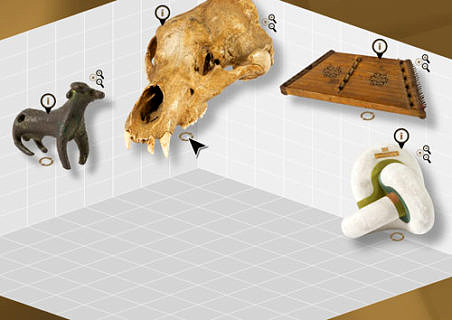
Models, organisms, minerals: Universities have always been an important place for collecting and cataloguing objects for safekeeping. Over time, these treasures were forgotten and left to live a lonely life in the storeroom. In recent years, curators have started preparing the collections for research and teaching again. At FAU they are now being made ready for the digital age.
by Ilona Hörath
The ‘digital cabinet of curiosities’ of FAU’s collections is underway. In times when digitisation is penetrating all areas of life and leading to major transformations at all levels of society, Udo Andraschke, 44, has launched a research project with a strong pull. ‘After over 275 years of FAU, the ‘Objects Online’ project is the first comprehensive attempt to systematically catalogue our collections,’ says Andraschke, FAU’s curator. With its documentation and digitisation strategy, FAU is pursuing an important objective: To make knowledge available via its over 25 collections and to link the digital inventories together.
But one thing at a time. The University’s collections represent a large number of research fields that mirror FAU’s broad portfolio of subjects in a multitude of ways. Compared to conventional museums, university collections are mostly used in research and teaching. This means that the general public is for the most part unfamiliar with all the treasures that often slumber in stacks and repositories. The first step towards making the collections more visible was already taken back in 2007: ‘Unpacked’ was the title of a successful exhibition in Erlangen’s City Museum – visitors and the media were enraptured by the selection of exhibits. ‘That was a beacon for the collections here in the region and far beyond,’ says Andraschke. In addition, in 2011 FAU was one of the first universities in Germany to establish a central curator’s office to generally maintain and safeguard the collections and bring them out of the shadows – Udo Andraschke has been responsible since then for watching carefully over FAU’s ‘world of things’. One of his tasks is to accelerate the cataloguing and digitisation of the collections: According to Andraschke, this is essential for being able to use them as effectively as possible in research and teaching.
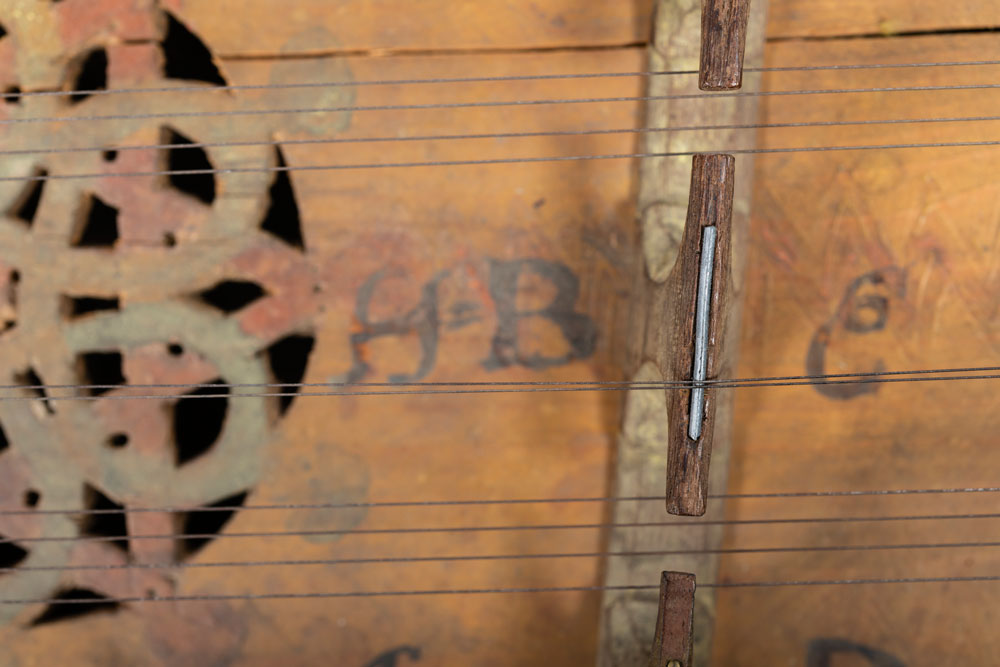
Not necessarily sought – but found nonetheless
Taking a photograph of an ancient piece of pottery and typing a few details into an Excel sheet – that was yesteryear. ‘Objects are now recorded in a virtual research environment, existing data augmented with further information and all data agglomerated,’ explains Andraschke. A web portal then brings the digital inventories together across all the collections, producing a virtual public repository with hundreds of thousands of digital twins. ‘Digitisation is a great opportunity to increase the accessibility and visibility of our collections,’ says Andraschke, a science historian who studied in Erlangen and Regensburg. The ‘Objects Online’ project started in March 2017 and will receive funding of around €550,000 from the Federal Ministry of Education and Research up until February 2020. It is being implemented with the active support of a project team composed of two research associates and eight student assistants.
‘Our system must not only facilitate a professional and targeted search but also enable a sideways glance,’ the curator explains. ‘Users should also be able to find things they were possibly not even looking for. Our virtual research environment should therefore – like any tangible collection too – allow productive and in the best case knowledge-enhancing digressions,’ says Andraschke. ‘The common portal should, however, also invite users to wander between our fabulous inventories.’ Clearly Andraschke is not planning to build up a trivial database but instead a digital repository which at the same time is a place for contemplation and discourse and offers various possibilities for exploring the collections. ‘We are pretty much alone here as far as university collections are concerned. That’s surely one of the reasons for the nationwide interest in our project.’
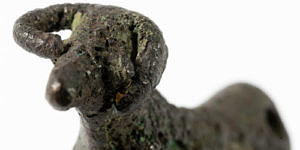
The ‘Objects Online’ project
In total, FAU has over 20 collections. Udo Andraschke and his team have selected six in the first instance: the Collection of Musical Instruments contains approximately 90 instruments and is housed in the Würzburg Residence. The History of School Education Collection contains approximately 180,000 crib sheets, exercise books, reports, writing utensils, school furniture, learning materials etc. and is one of the largest of its kind in Germany. The Prehistory and Early History Collection not only includes significant small finds from the Stone Age to the Middle Ages, but also the entire inventories of finds from important Palaeolithic excavations in Bavaria. The purpose of FAU’s youngest collection, the Medical Collection, established in 2000, is the three-dimensional documentation of university medicine in Erlangen. The Collection of Prints and Drawings includes drawings by Albrecht Dürer, Hans Holbein the Elder and Albrecht Altdorfer and is comparable in terms of its artistic value with collections in Paris, Vienna, Berlin or New York. The Palaeontological Collection is one of the geoscience collections at FAU. It focuses on fossils found in various locations throughout South Germany. Information on the individual FAU collections.
‘The collections have an enormous creative potential’, says Andraschke, who is always on the go. ‘What encourages us in this context is above all the collections’ relevance for research and teaching.’ The knowledge generated in the project itself – such as expertise in data modelling – will be made available for research and has already been incorporated in teaching in FAU’s digital humanities and museology related degree programmes over the last few semesters: For example in the shape of a critical dialogue on the challenges, obstacles and consequences of digitisation in collection practices and collection-related research. An ideal forum for this is the Interdisciplinary Centre for Digital Humanities and Social Sciences (IZdigital) founded in 2014. Not altogether altruistically, young curators with digitisation know-how are to be involved at the same time. In addition, new user groups are accessed with the help of the virtual research environment – laypersons just as well as experts.
Better connected
FAU is not tackling the project all on its own. Udo Andraschke succeeded in bringing on board the Germanische Nationalmuseum (GNM) in Nuremberg, the largest museum of cultural history in the German-speaking region. ‘The GNM’s Department of Cultural and Museum Informatics is excellent and contributes a significant part of the technical input and specialist expertise in the area of international documentation standards and formats.’
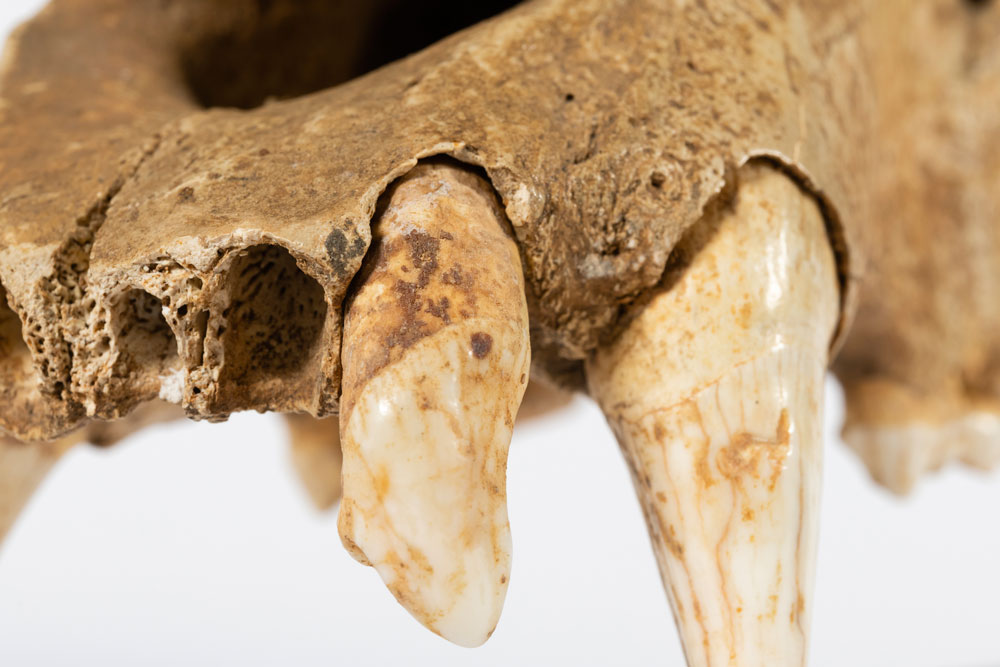
Andraschke can explain why working with networked data is what makes the project innovative. ‘If you want to draw new knowledge from data, you have to connect them. The resulting search and analysis possibilities quite often lead to new research questions and considerable knowledge potential.’ Networking with other portals, such as ‘Europeana’, a virtual library, and other important scientific portals is also planned. ‘This will make FAU’s collections available worldwide.’
To date, the team led by Udo Andraschke has digitised several tens of thousands of objects. He has long been aware of what awaits FAU: ‘We’re going to be busy for some time to come.’ After all, it is a matter of over a million objects of partly unique and exceptional significance that are to find their way onto the web.
About the author
Ilona Hörath studied theatre studies, German language and literature and philosophy and now lives and works in Erlangen as an author and journalist. She has worked for more than 20 years in regional and national media aimed at both the general public and specialist audiences, including Bayerischer Rundfunk, Nürnberger Nachrichten, VDI nachrichten and Technology Review.
FAU research magazine friedrich
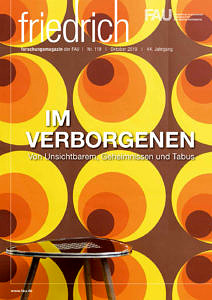 This article first appeared in our research magazine friedrich. You can order the print issue (only available in German) free of charge at presse@fau.de.
This article first appeared in our research magazine friedrich. You can order the print issue (only available in German) free of charge at presse@fau.de.